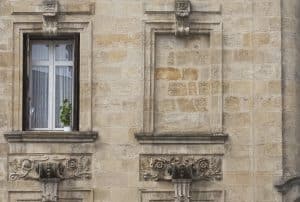Unveiling the Historical Roots of “Daylight Robbery”
Taxing Light: Unravelling the Legacy of Window Tax and Its Impact on Architecture and Language
In the annals of taxation history, a peculiar chapter unfolds, taking us back to the year 1696, when William III of England instituted a tax that would not only shape the architectural landscape but also birth the metaphorical phrase “daylight robbery.” Let’s delve into the historical shadows cast by the Window Tax, exploring its origins, impact, and the ingenious tactics employed by homeowners to avoid this levy.
The Birth of the Window Tax
In 1696, William III introduced a property tax that would soon become notorious—the window tax. Unlike conventional property taxes, this levy wasn’t based on the size of the property or the land it occupied. Instead, it targeted the number of windows a dwelling possessed. Homeowners with more than six windows found themselves subject to this peculiar tax, which led to a series of unintended consequences.
Bricking Up the Light: Tax Evasion Tactics
Faced with the prospect of escalating taxes, homeowners devised creative strategies to minimise their financial burden. One particularly noteworthy tactic was bricking up windows. To avoid the window tax, homeowners would close off all but six of their windows. This architectural manoeuvre not only altered the aesthetic character of homes but also symbolised a form of silent protest against what many considered an unjust taxation system.
Daylight Robbery: A Metaphor is Born
As the Window Tax persisted for nearly 150 years, the phrase “daylight robbery” emerged as a metaphorical expression to convey the perceived injustice of this taxation method. Homeowners, feeling robbed of both natural light and financial resources, used the term to emphasise the oppressive nature of a tax that seemed to unfairly target those with larger or more illuminated homes.
Legacy in Bricks and Mortar
The Window Tax continued until around 1851, leaving a tangible legacy in the form of bricked-up windows—a common sight in the United Kingdom even today. Older houses, bearing the scars of tax evasion tactics, stand as silent witnesses to a bygone era where the number of windows became a measure of taxable wealth.
Beyond Taxation: Daylight Robbery Endures
While the Window Tax is a relic of the past, the legacy of “daylight robbery” endures. The phrase has transcended its literal origins, finding new life in everyday language to describe situations where individuals feel unfairly exploited or charged exorbitant prices.
In revisiting this historical episode, we not only uncover the peculiarities of taxation in 17th to 19th-century England but also recognise the enduring power of language to capture the essence of socio-economic challenges. The bricked-up windows that dot the architectural landscape serve as a visual reminder of a time when taxation reached into the very fabric of homes, shaping not just the structures themselves but also the language we use to discuss the injustices of the past.
